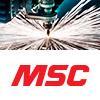New machines are poised to make it easier for you. If you’re not using it today, you might want to find out more about what MakerBot has been up to. Since 2013 the company has been owned by major industrial 3D-printing giant Stratasys—which makes 3D parts for many major manufacturing OEMs, including Airbus.
MakerBot’s latest machine, Method, claims tolerances for finished parts at plus-minus .2 millimeters for the first 100 millimeters in the X, Y and Z axes—and then it scales up at that same proportion, .002 millimeters per millimeter for any dimensions that are over 100 millimeters.
Part accuracy for a 3D-printed part is a pretty major advancement. Most desktop versions can’t come close to it. Part of the reason is MakerBot’s complete rethinking of a professional model that includes a heated chamber to help control the environment. Most of the use cases are for fixtures, jigs and custom light-duty workholding and complex castings that would cost too much to make out of metal. Using a water-soluble plastic also helps.
What do you think? Would tighter tolerances for complex fixtures and jigs help your operation?


I have been using the Replicator+ since the beginning of this year (it is my wife's Christmas gift). This is my first 3d printer and I can say that I am quite happy with it. Yes, there are downsides, but they are not critical. The main disadvantage is the small printable area. Now I'm thinking about buying some kind of open 3d printer.